Reinstating a Victorian fireplace can help bring back the character to your period home.
It’s also a joy to know you’ve put back a feature similar to the original fireplace sadly ripped out years before.
However, it can be difficult to work out what the original fireplaces were like in your house.
Don’t make the mistake I did when I moved into my house by buying a load of reclaimed fireplaces thinking they would be right with little research or investigation.
The clues are there if you do some detective work around your bricked-up fireplace openings!
Here are my tips for deciding the most appropriate fireplaces for your home.
Reinstating a Victorian fireplace – choosing the right period
If your home is over a hundred years old some rooms may have had two or three fireplaces over the years.
The Victorian owners of my 1856 cottage massively renovated its exterior and interior in the late 1880s.
There are signs that the only remaining chimney breast from this period once housed a Georgian-style hob grate until it was replaced with a more energy-efficient late Victorian fireplace.
I didn’t reinstate the original fireplace in this room as the whole space had been significantly altered at a later date.
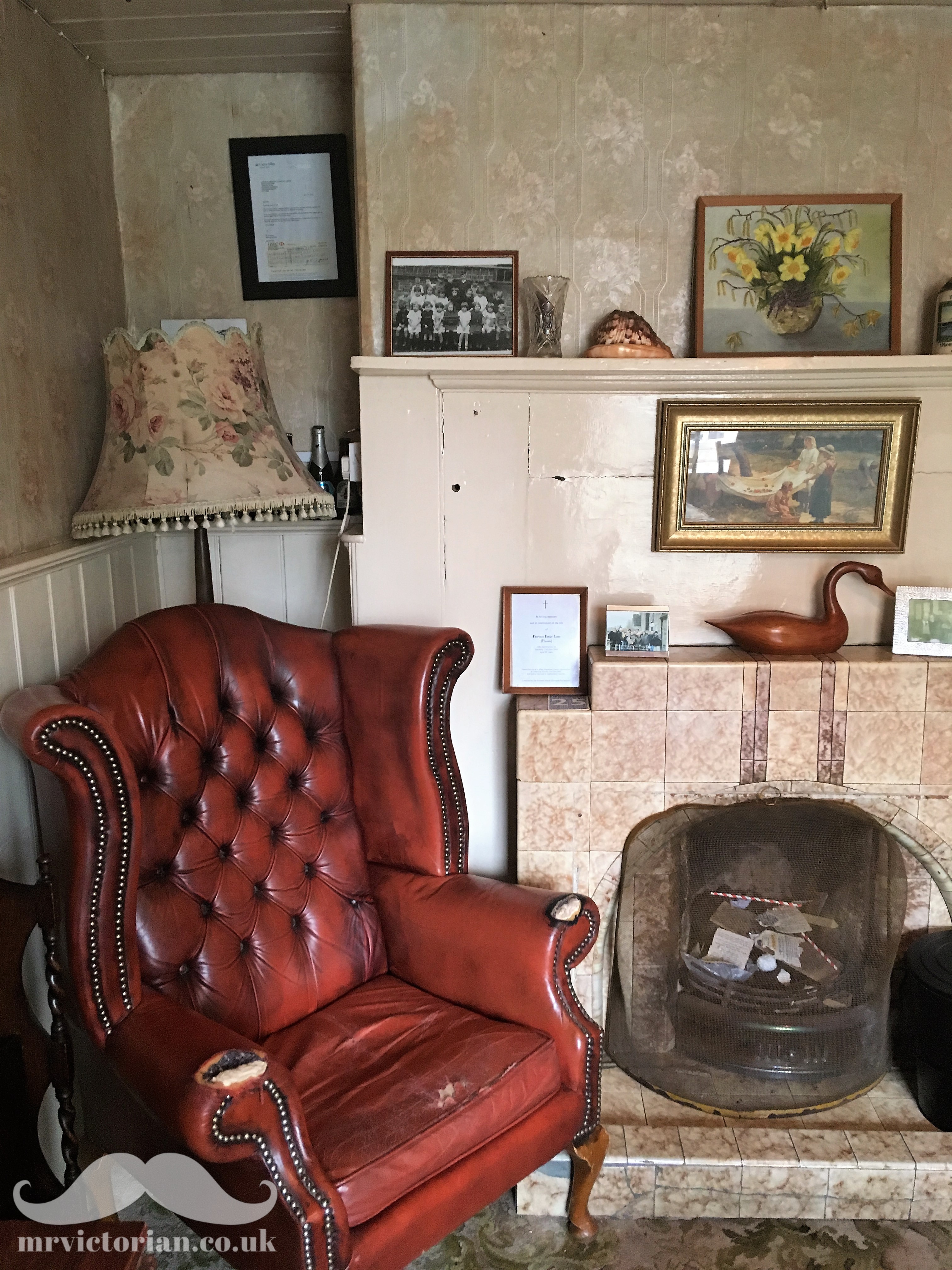
Likewise, Art Deco style tiled fireplaces may have replaced cast iron fireplaces in your home when they fell out of favour in the 1930s, particularly in the main living rooms.
Significant developments in design and technology often dictated these changes. Therefore, a homeowner wouldn’t have replaced an ornate 1890s fireplace with a similar version in Art Nouveau style in the 1900s!
There are a wide range of antique fireplaces available on Ebay and from architectural salvage dealers for your home.
Reproduction fireplaces don’t offer the variety of styles and sizes that were available to your home’s builders.
Likewise, reproduction tiles often don’t match the patina and hand-painted detail of original versions.
Reinstating a Victorian fireplace – delving deep
Before looking for a fireplace remove the plaster from the lower half of your chimney breast to see if you can see any evidence of a previous fireplace.
This will make your room look a mess for a while but at least you’re not buying your replacement fireplace blind.
You’ll need to replaster around the fitted fireplace anyway for an authentic finish. My pet peeve is that so many people just screw it to the wall!
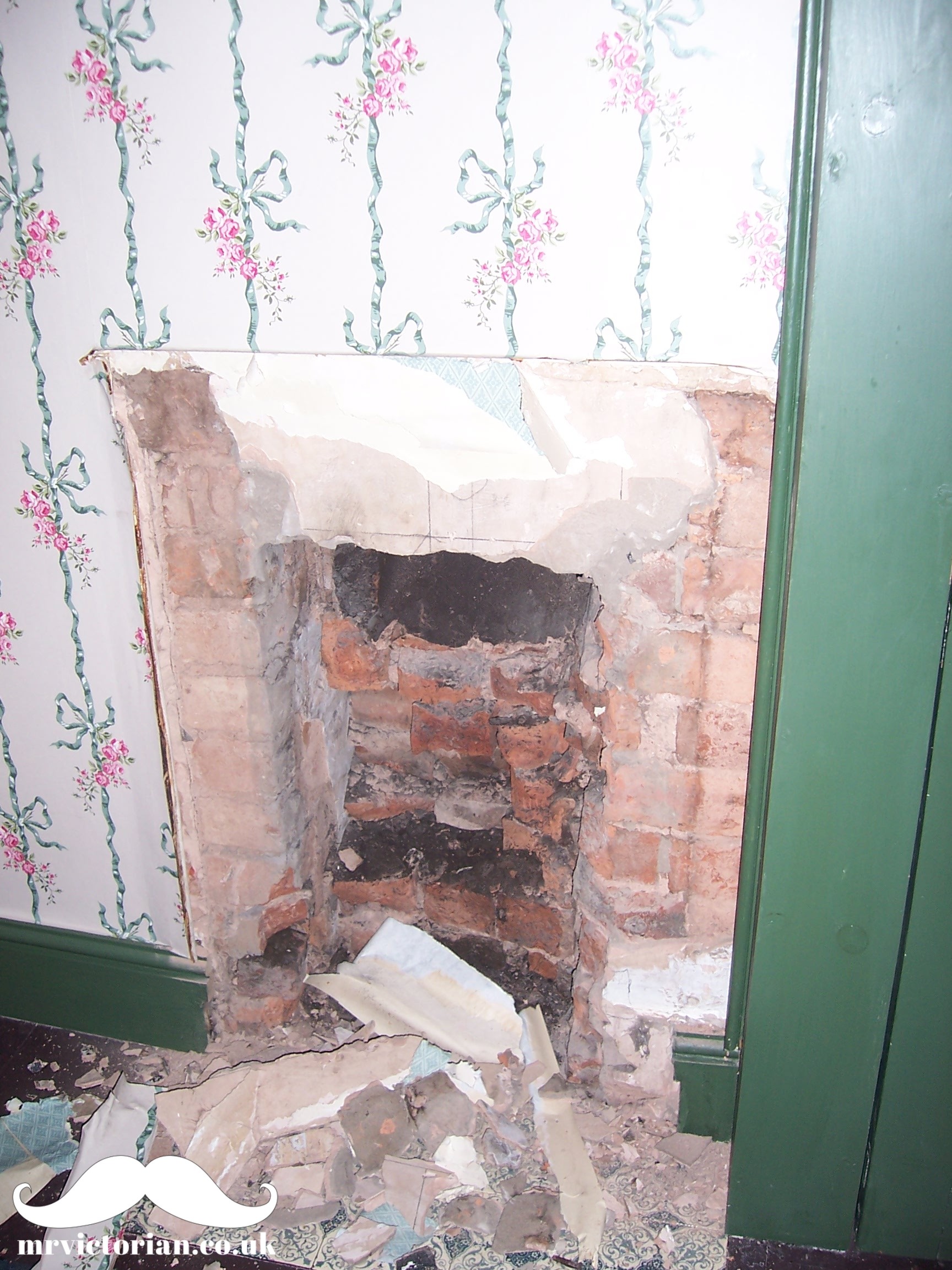
It’s likely the fireplace opening will be small in a bedroom. However, wider openings (24 inches or more) suggest it may have had a wider cast iron insert with a separate surround.
Likewise, deep chimney breasts in kitchens and former sculleries will have particularly large openings to house cast iron ranges.
I was lucky to see the outline of the original fireplaces in my smaller bedrooms so I purchased fireplaces of similar sizes and outlines. Many antique fireplace dealers give you the dimensions of their fireplaces on their website.
If the outline isn’t clear, it’s likely you’ll see two bolt holes in the brickwork that fitted the fireplace to the wall. These would’ve been just below the mantlepiece and give a good indication of the original fireplace’s width and height.
Otherwise, you may find two iron or lead hooks which held the upright parts of a separate surround as I did in my main bedroom.
Reinstating a Victorian fireplace – the hearth of the matter
The original flush hearth will also give you some clues and may be under a 1930s raised tiled hearth.
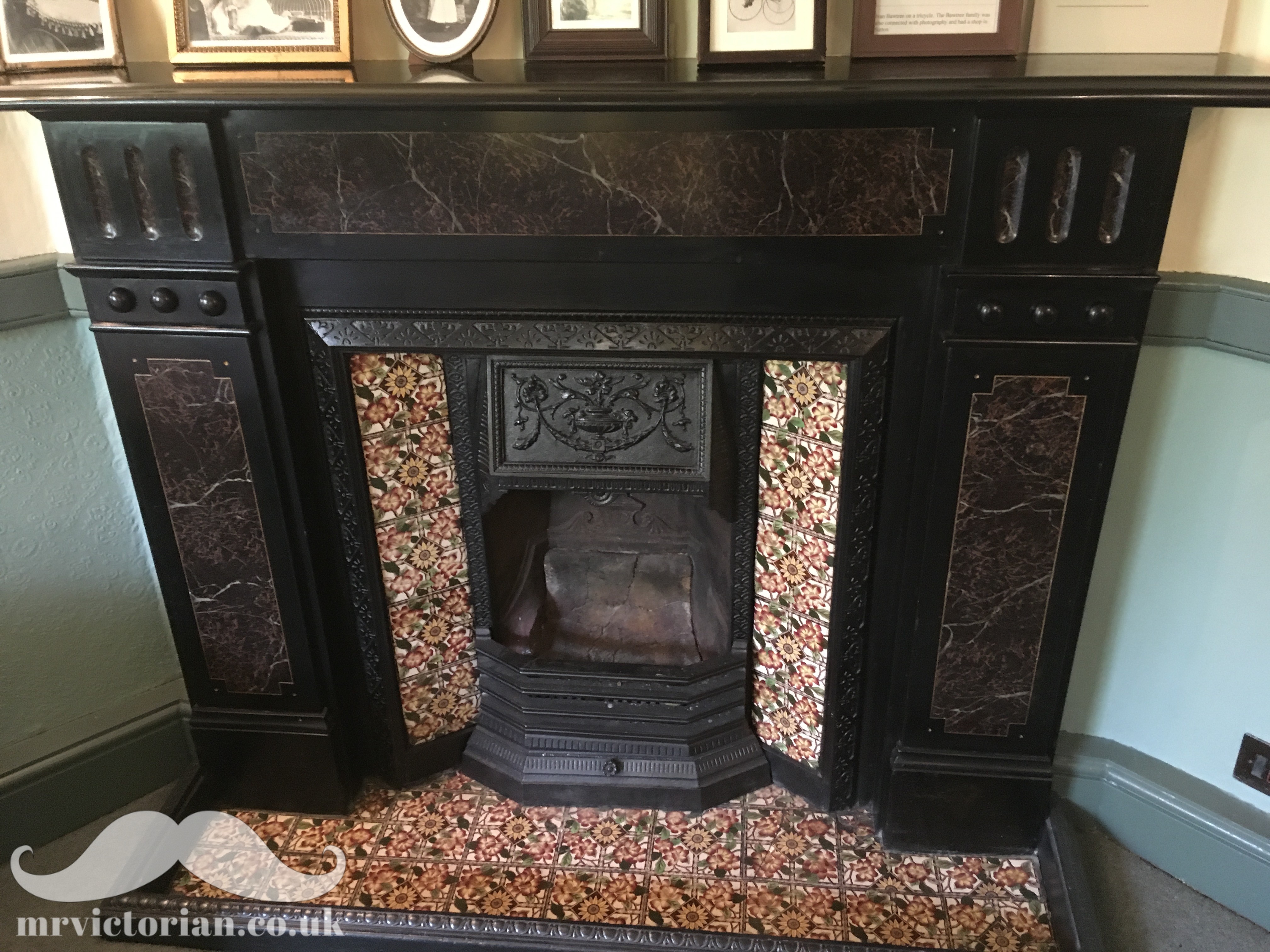
Smaller bedroom fireplaces were often positioned to one side of a chimney breast to make room for the main downstairs chimney flue.
These fireplaces tended to have hearths made of stone or concrete.
It’s likely there would have been a tiled fireplace if there are signs of a flush tiled hearth, particularly if the opening is large.
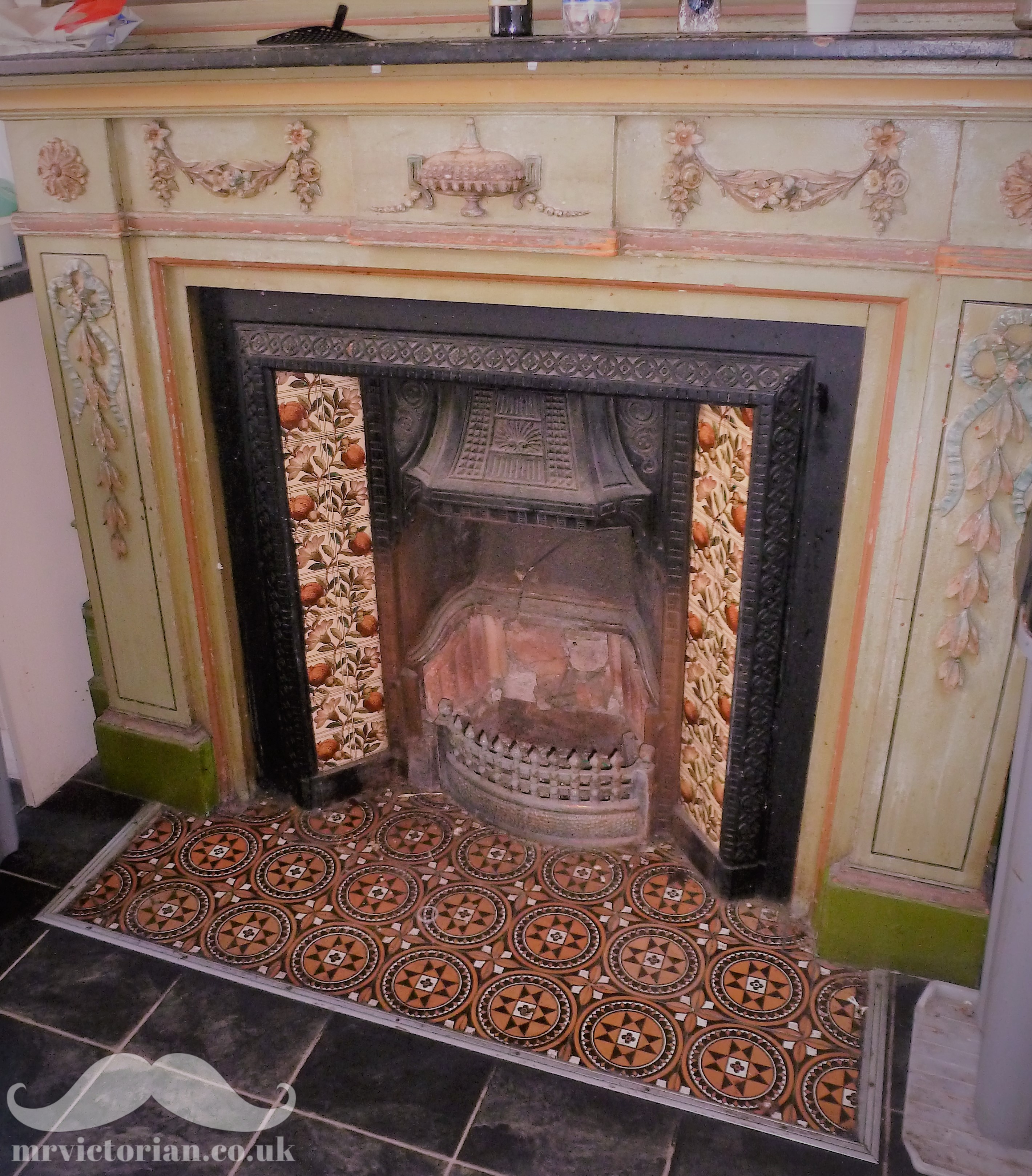
The design of the hearth tiles may also give you clues what the fireplace tiles were like:
- floral tiled fireplaces of 1890 to 1910 often had matching hearths
- plain coloured tiled fireplaces of the Edwardian period often had brick-style rectangular hearth tiles of the same colour
- darker coloured six-inch tiles are not an indication of the original fireplace tiles as these were chosen to hide dust and cinders rather than match the fireplace
- three-inch or rectangular mottled or iridescent tiles are likely to be from a 1930s tiled fireplace with no iron detail.
A large number of original floral tiles survived in my main bedroom’s fireplace hearth. So I found 14 tiles of the same design on Ebay for the fireplace and missing hearth tiles.
The Victorians often positioned hearth tiles around the fireplace so their layout could give you clues about the width and shape of the original insert.
Reinstating a Victorian fireplace – opening up
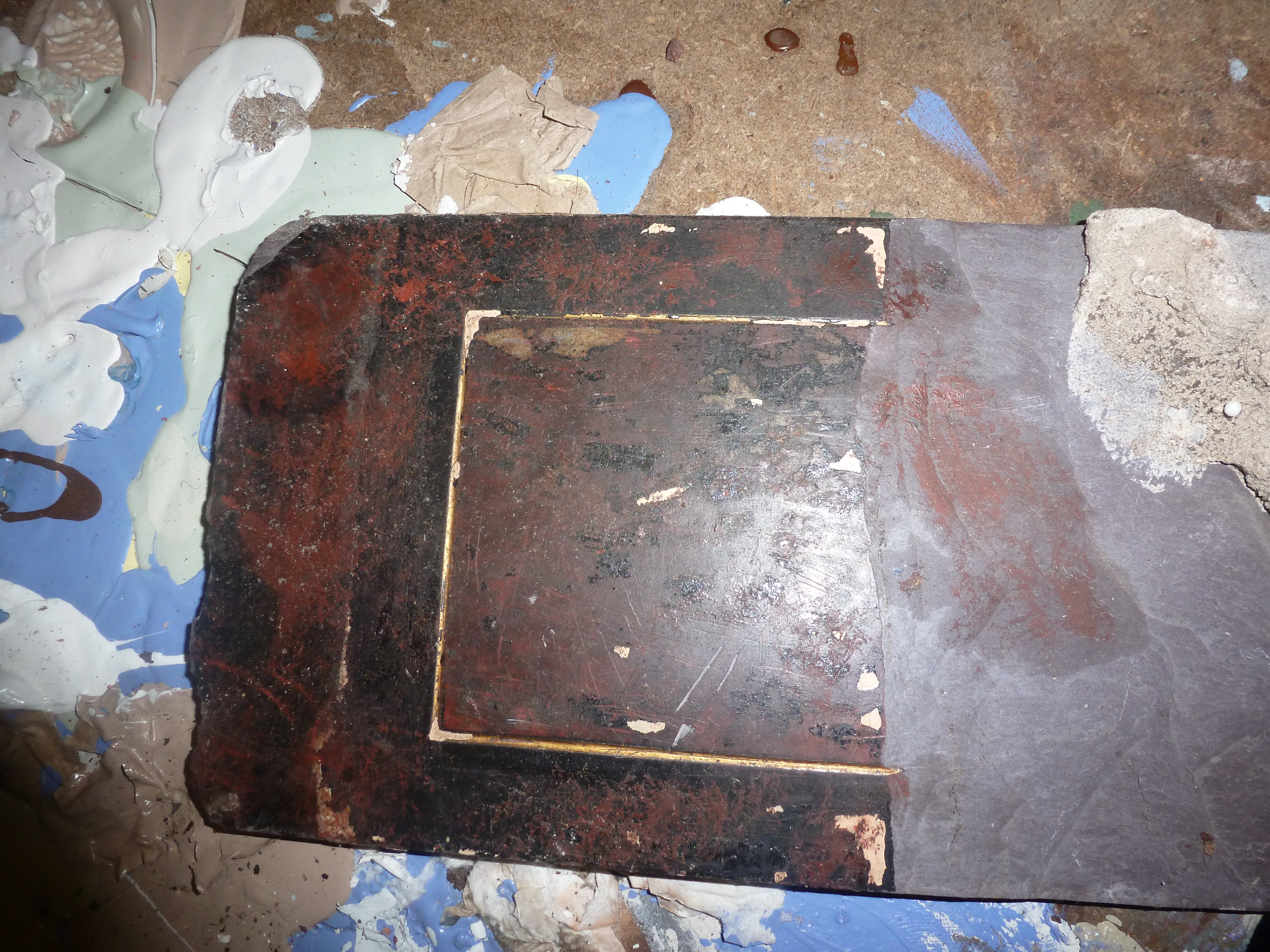
You may be lucky to find remnants of the previous fireplace inside the bricked-up opening.
I found my main bedroom’s slate surround smashed up as hardcore in the opening, so I knew the colour and design to help me find a similar replacement.
Reinstating a Victorian fireplace – design is key
Fashions have always dictated fireplace designs. Whilst Victorian fireplace catalogues show some designs were available for over 50 years, most householders and developers went along with the latest fashion when purchasing their main fireplaces.
It is worth looking at architectural antique sites as they often give estimated dates of their fireplaces for sale. Also, many iron fireplaces come with a registration stamp which dates when it was first designed.
These are the key trends:
1830 to 1850
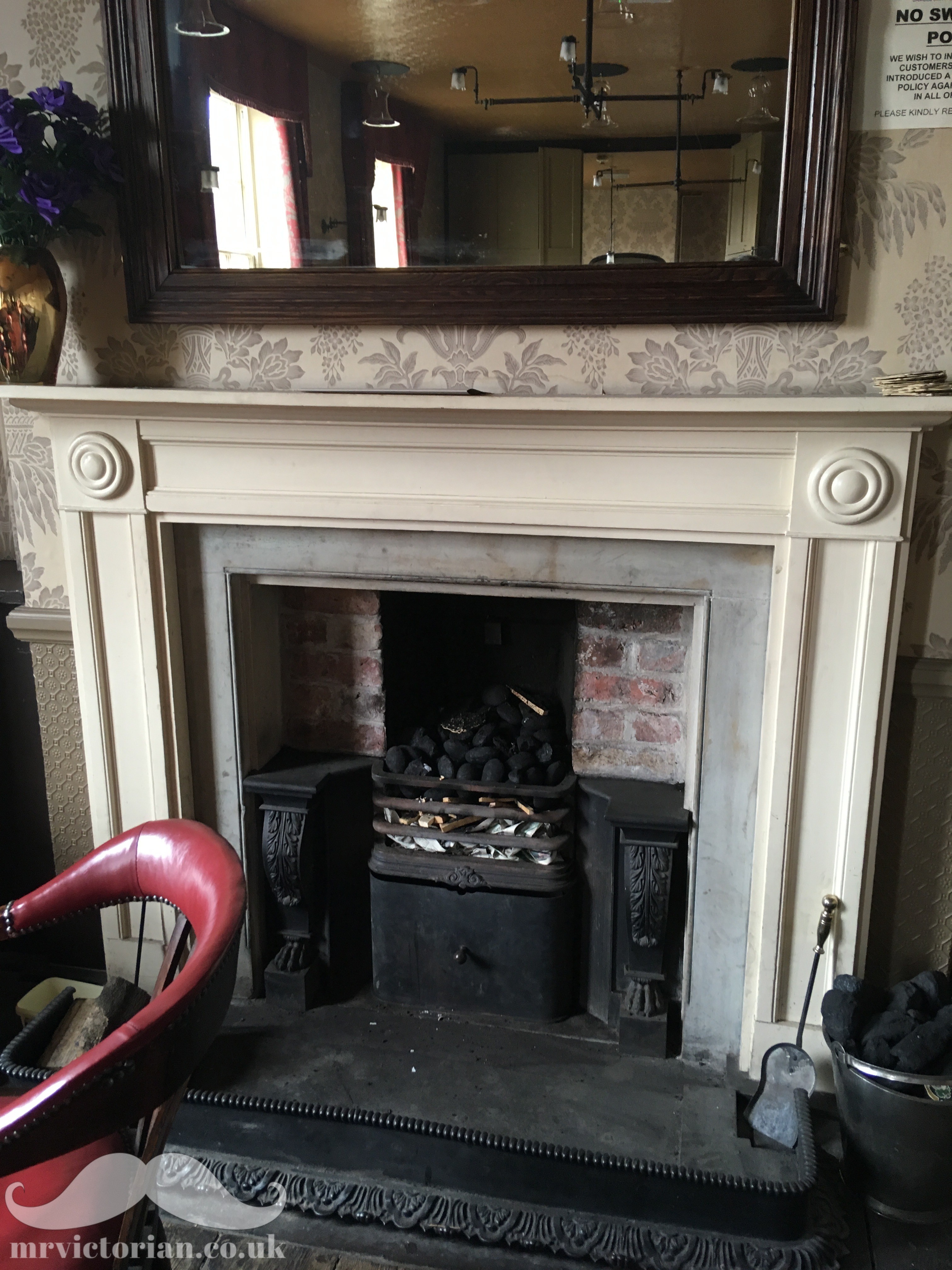
Hob grates were the most popular with wooden, stone or marble surrounds. These varied in size according to the size and status of the room.
Horseshoe-shaped grates were also popular in drawing rooms at the end of this period.
1850 to 1880
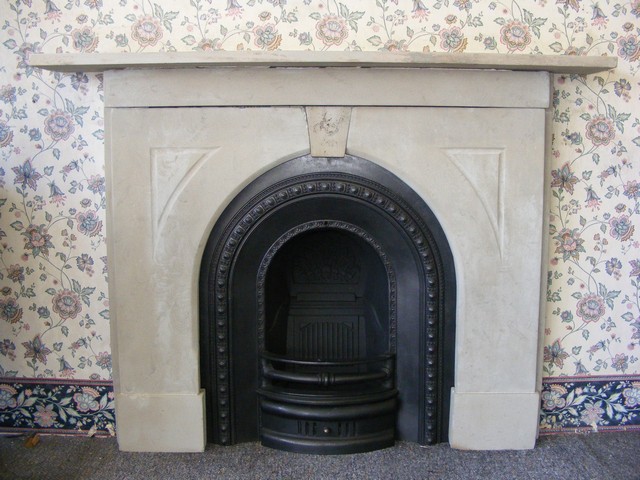
Arched register fireplaces were all the rage during this period and were more energy efficient than a hob grate. As before, they either came with stone or marble surrounds in the main living rooms. Bedrooms tended to have smaller fireplaces with wooden surrounds.
All-in-one iron fireplaces without a surround became more commonplace in bedrooms during the period.
1880-1900
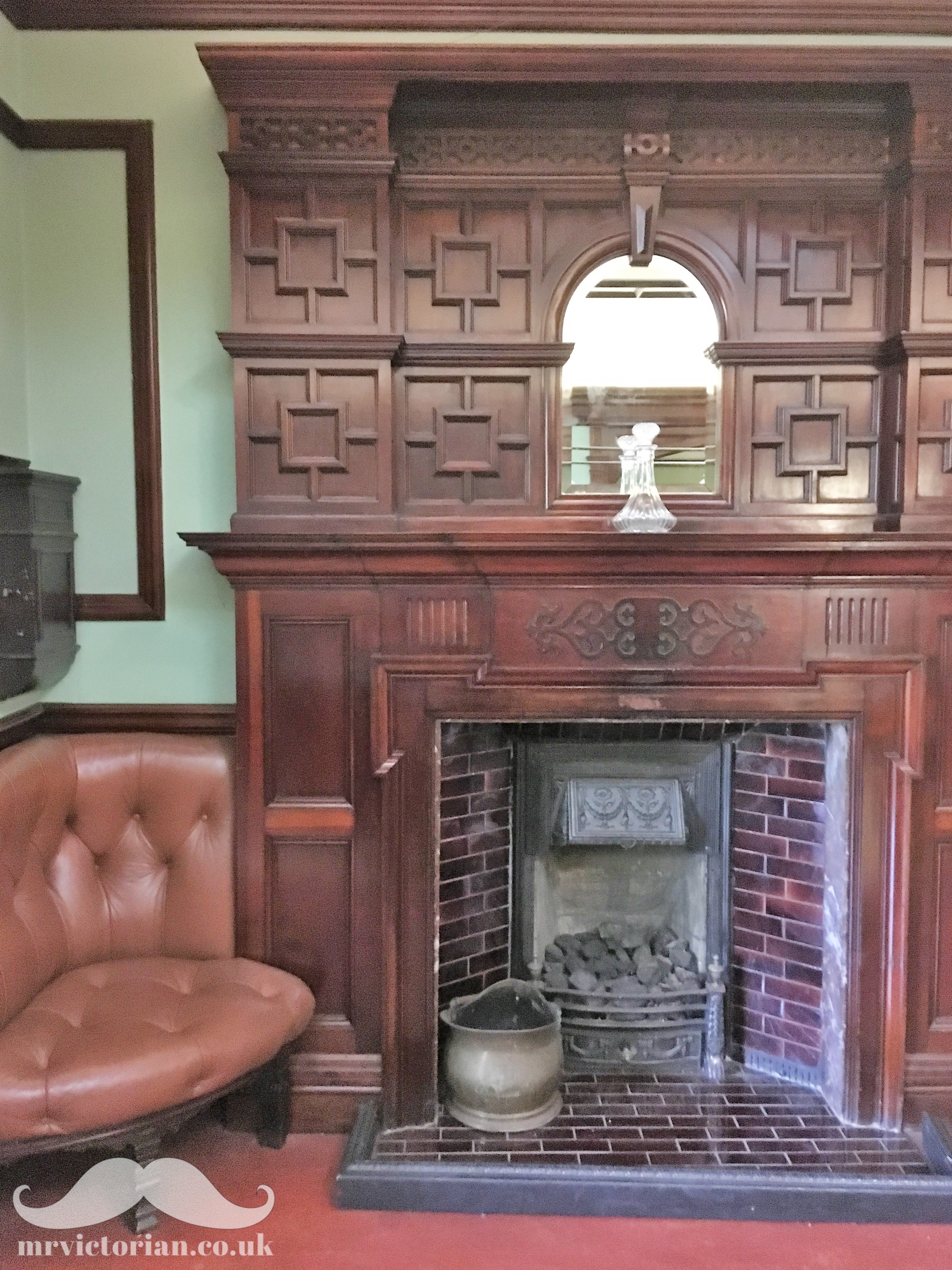
Tiled register grates with tiled hearths were the must-have for reception rooms and large bedrooms in late Victorian houses.
Fireplaces began to have hoods to reduce smoke in the room and featured ornate cast detailing. Sunbursts, fruit and flowers were common designs.
Slate surrounds with painted marble designs were an affordable alternative for working and middle-class parlours. Upper middle-class homes could afford fashionable oak or white painted surrounds with mirrors and shelves in their reception rooms.
1900-1920
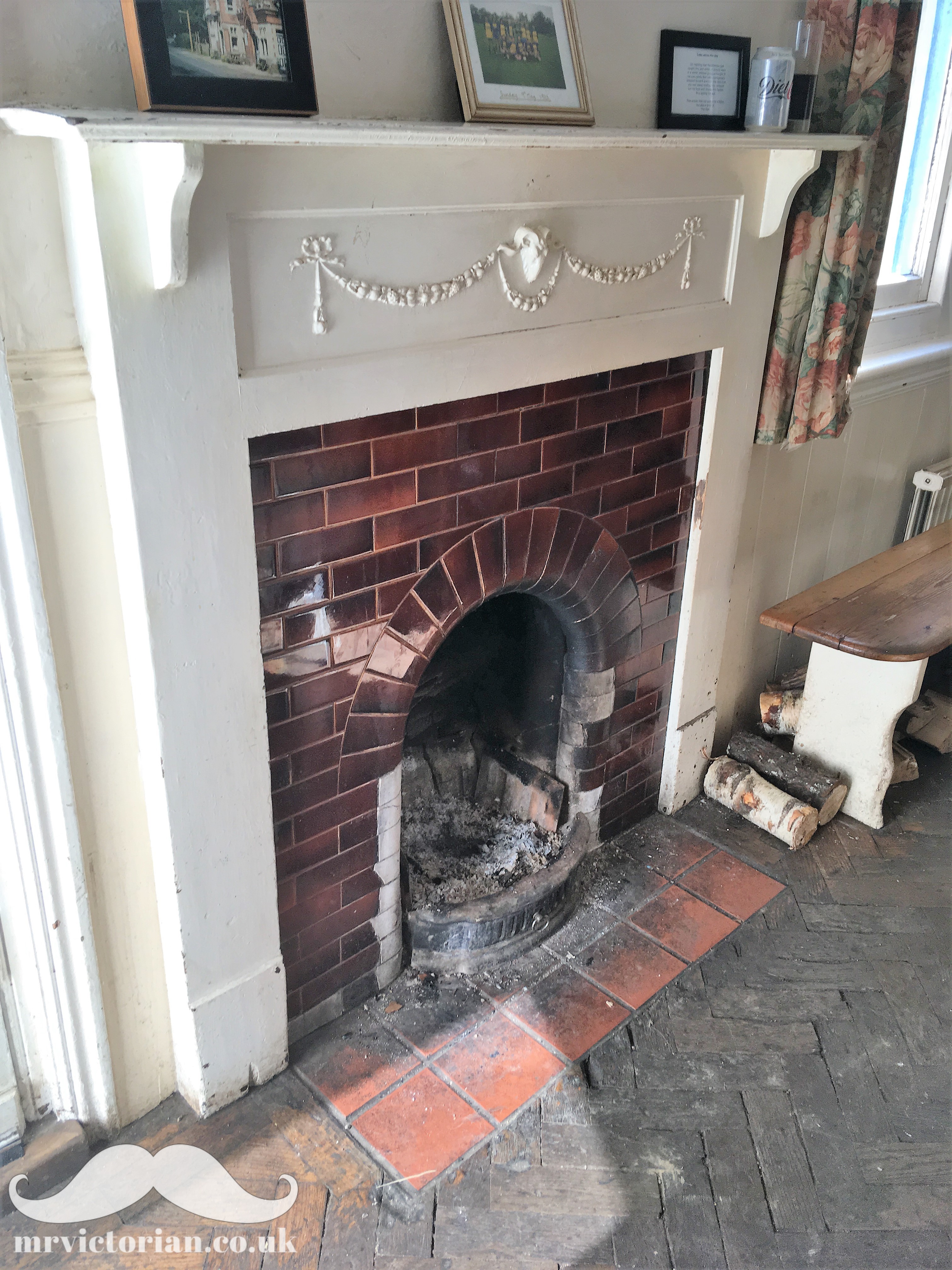
Clean lines and Art Nouveau motifs swept away ornate iron castings of the previous two decades.
Transfer printed floral tiles fell out of fashion in place of relief tiles with symmetrical Art Nouveau flower motifs or plain coloured tiles.
Completely tiled inserts with wooden surrounds became popular in this period, paving the way for all-tiled fireplaces of the 1930s.
Reinstating a Victorian fireplace – status is everything
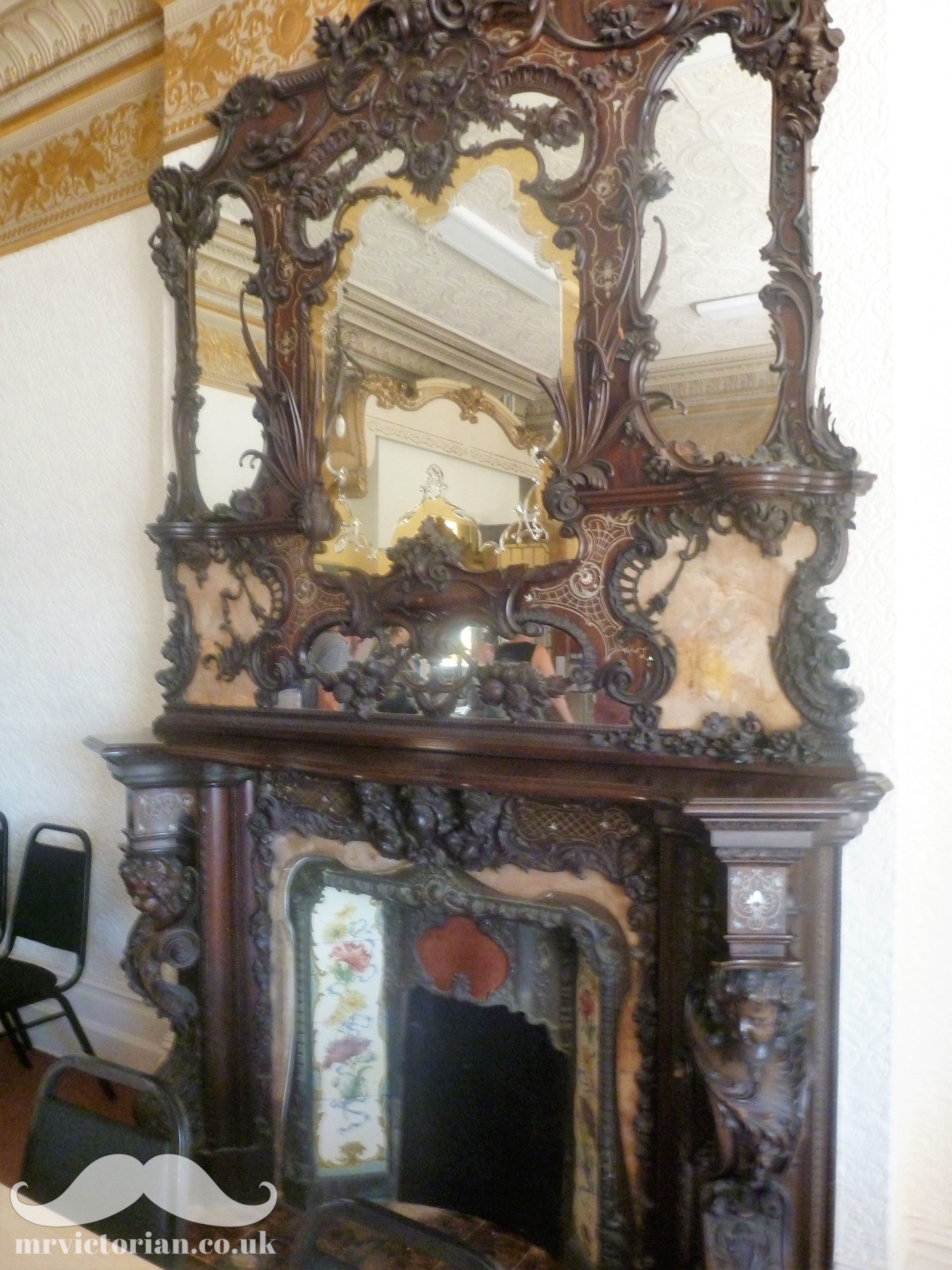
The status of the home usually dictates the design and materials of its fireplaces.
Larger Victorian and Edwardian houses tend to have marble surrounds in the main living rooms and larger bedrooms. Small bedroom fireplaces without surrounds were only located in servants’ bedrooms in these homes.
Whereas, working class cottages would have only had one large fireplace with a separate surround in the parlour.
Upper-middle class houses with fashion-conscious owners often removed standard tiled or arched inserts to make way for a dog grate in the opening in Aesthetic Movement style.
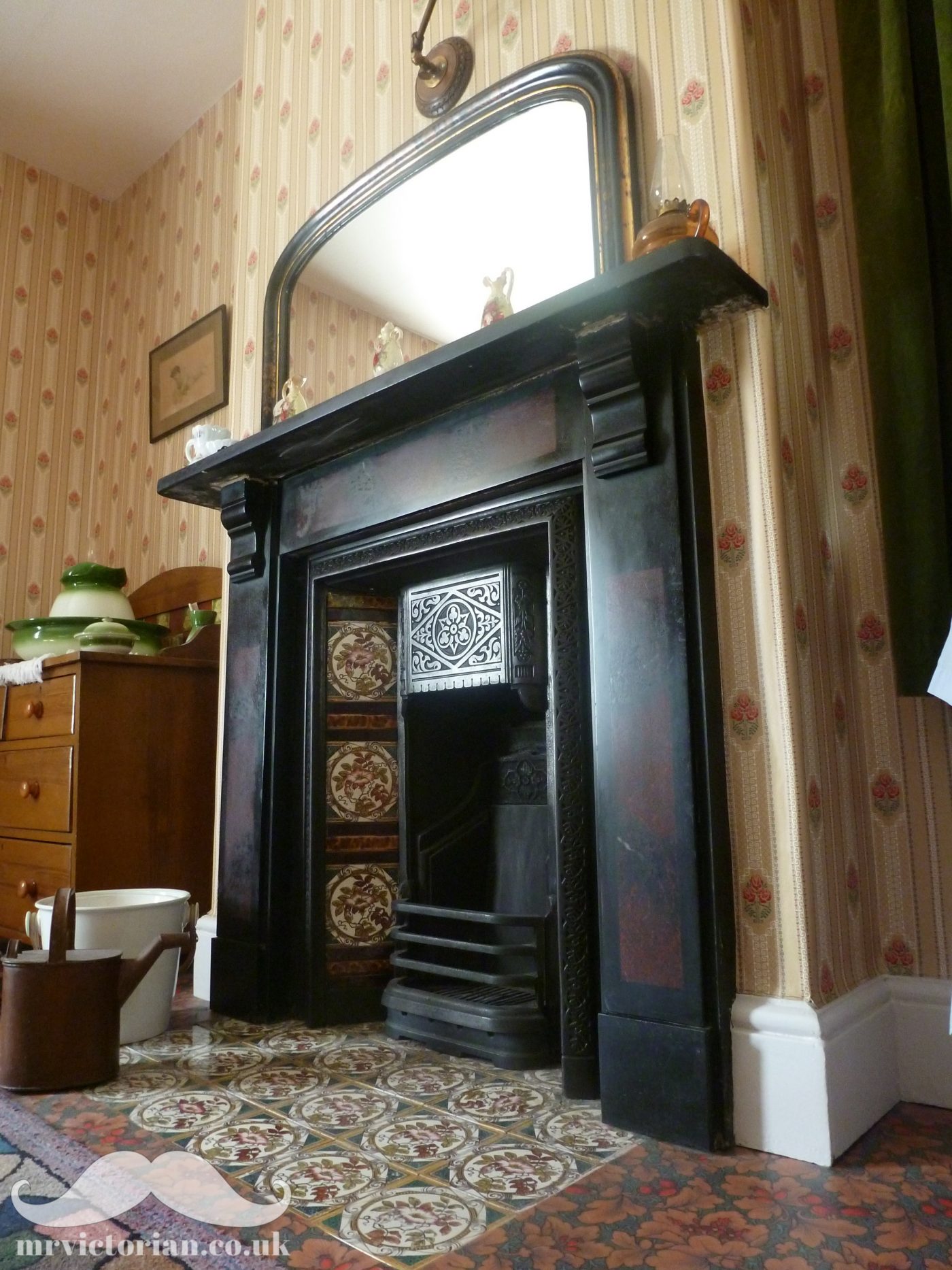
Great info and answers to lots of questions I’ve had about our house. Thank you!
Many thanks! Glad it has been of use.
I am looking for someone to remarble my Victorian slate fireplace. Does any one have any contacts for this I live in Cambridge uk
I have not done this myself (I touched up one panel but it was the cross piece so less noticeable) but have you approached one of these? I would also try the bigger reclamation yards as they could recommend or do for you. Good luck:
https://www.fireplacerestoration.co.uk/portfolio_category/domestic-fireplace-restoration/
https://imaginativeinteriors.co.uk/painted-marble-effect-on-slate-fire-surround/
Hello, I need help identifying and restoring an old fire Place we have in our newly purchased victorian house.
Hello, I’ve recently done some chipping away at newish 1980’s plaster in the vein hope of finding my upstairs Bedroom fireplace. I found some old electrical sockets with a void behind and I removed half a chard brick- filled with excitement I dare not venture any further until I’ve received some advice. The void is filled with small gold insulation pellets that I’ve also seen in my loft- please have you any ideas ?
You should see an outline of an opening with newer bricks inserted if there is a fireplace opening. As long as you don’t disturb the lintel holding it up you should be fine to chip away at this area.
Hello, I love your site! I have an Edwardian marbalised slate fire surround. It’s not in great condition and one day I’II replace it with something visually more beautiful, from the same era. Until I can afford to do this I’m thinking of painting it white or a typical shade from the era (Little Greene paints do some fabulous shades from times past). Do you have any thoughts? Would it be a huge mistake to paint it?
Hi Amy, I think it would be a huge mistake as it is original to your house and once painted you can never uncover the historic paint effect again. Perhaps have a go at marbleising it yourself or get it professionally done? Slate oil from most hardware and fireplace shops does wonders to bring up the shine if it is looking a little dull.
I am trying to reinstate( for aesthetics only) the existing bedroom fireplace in my 1908 property. Everything is there except the back damper. I have looked all over but cannot seem to find any that will fit. I am also confused as to the reason for the bolt at the top of the fire insert. Any advice would be welcome,thanks.
Sorry for the delay in replying. You can get back dampers from Ebay, reclamation yards and a few companies do reproductions – google Victorian fireplace spares. Not sure what the bolt is without seeing it. Thanks, Peter
Hi
I am in London and have a fireplace – I believe slate, black with faux marble panels. In the 20 years we have been here, the black has become worn in places and some of the panelling has worn away. I can send pictures if you let me know where to.
I want to find out how to restore the black properly and also how to get the faux marble panels restored. The link you posted above for Fireplace Restoration is no longer active and was wondering if you know of anyone else in London who specialises in such things who may be able to advise me.
If not, maybe you know if there is a special paint to use on slate mantelpieces, and do you know if it will be OK if I just touch it up, or do I need to repaint the whole piece – if so, will it need rubbing down and priming?
Thanks
Dave
Hi there, very helpful piece thank you. I recently replaced the fireplace with an old victorian one in our living room- delighted with it and it looks great. Next up is tiling the concrete hearth which is flush with the floor.
Do we remove some of the concrete so the tiles are flush with the floor? what do we do about the ash “drawer”?
I would advise you to keep your concrete hearth as it is likely to be original – can you not paint it or clean it to freshen it up? Tiled hearths tended to be in more important rooms (parlour, master bedroom) from the 1880s. If tiling you’ll need to remove all the concrete and set a lower concrete base for the tiles.
Hi I have knocked out a covered tiled fireplace to reveal an old victorian one. Trouble is the height of the hole i have is only 76cm by 70 wide to fit an insert in it has the metal frame with tiles to the side
Thanks for some great information, and especially for showing tiled fireplaces with matching hearth tiles! Its hard to find pictures like these.
I’m working on reinstating the livingroom fireplace in our 1890’s tenement flat. I’ve uncovered the beautiful original hearth tiles. They are bretty badly damaged, but i feel its part of the history so i’d like to clean and sensitively repair if possible, can you recommend how i can do this?
I also have purchased a suitable fire surround however it has no tiles. I feel any other pattern will detract from the original tiles and i’m wondering if you have any recommendations of how to get reproduction tiles made to match ?
There is a company that can print designs on tiles. I don’t have their details but I’ve seen people on Instagram do this. It does depend if it is a flat transfer printed tile. If it is a relief tile that would be extremely expensive to recreate. If you can send me a pic I can give you an idea of how common they are and what may be possible. I used Milliput epoxy to fills in any major cracks and touch up with oil paints. At the end of the day cracks are inevitable with a tiled hearth over 120 years old so I just accept they’ll never be perfect and would look odd if they did!
An original cast iron 1900 Victorian hood fell out and cracked a corner off. Have searched replacement 17 x 11 inches but unsuccessful. Am also concerned about fitting a repaired (epoxy resin) hood so need advice about fixtures. A lightweight faux version would be better but does such a thing exist?
Hi, I suggest you look on Ebay and contact reclamation yards with photos of the original to see if they have something original. I have used the services of Oliver Osborne of Osborne Restorations who can either weld repair your original hood or can make an iron casting based on the original. His website is currently down but his email is [email protected] I hope this helps.
Hi live in a victorian house. One of the fireplaces is similar to the one you mention around 1900 1920 arch green tiles and same tiles surrounding. Some of the tiles have moved and have gaps in between and some pushed forwards etc. We only moved here just over a year ago so know no history. Are the moving tiles suggesting an issue in the chimney? Thanks
Hello, thanks for the article,
I would like to re skim plaster of apartment in a victorian house.
A lot of people say that I have to put lime over existing old lime but not gypsum.
I would like to know if you experience re skimming wall and what lime plaster did you used.
Thanks
I have a mantel from the 1850s but have no idea how to attach it to the wall. It’s about 7 feet tall with a mirror above the firebox opening. I live in the States and most of the houses here have sheetrock walls. Can recommend any websites or resources to find out more about the best way to install my mantel? Thank you.
Such a great post! We’re looking to reinstate a non-functioning fireplace back into the bedroom of our 1860s London cottage, but wondered if you had any thoughts/advice on a couple of points….
– We’re not confident DIY’ers so would be looking for someone to do it – what kind of tradesperson/skill should we be looking for?
– The previous owners put carpet down which I’m inclined to leave as is, but not sure how it would work with a hearth. Could we put the fireplace in without a hearth?
Thanks!
What a wonderful resource for old houses! I have reinstated a late Victorian/early Edwardian fire surround since it was coming away from the chimney breast wall, and have discovered (from the hidden surfaces) that the surround and mantel is of slate. Unlike most fireplaces that I read about, this one was painted to look like wood – largely a dark brown ‘mahogany’, inset with panels of black ‘ebony’ and sandy coloured ‘pine’ effects. Have you encountered anything that might explain what paints were used, or do you know how these surfaces might be touched up please? I am also not sure if the paint was susequently varnished – in some places it looks ‘polished’, but elsewhere has a dull matt finish.
I recently uncovered a gorgeous glazed tiled hearth (1.5×6″ tiles) in my 1890s victorian. The problem is, I had to remove a brick hearth that was laid on it, and there is still a significant amount of cement/mortar stuck to the glazed tiles. When I scrubbed the tiles to remove as much of the mortar as possible, it made the tiles a deeper more rich color and shiney. But when the tiles are dry, they are pretty matte and lackluster. Do you have any recommendations on how to remove the rest of the mortar and how to restore the shine to the tiles?
Hi,
This blog has been really helpful. Thank you so much.
I’ve just moved into a mid-terrace built in 1912. All original fires and hearths have long since been stripped out.
I’d love to reinstate something that looks original. However, the openings in the chimney breasts in the two rooms downstairs are only 13”x23”. I haven’t chipped off the lower plaster yet, but the mortar across the lower row of bricks either side of the opening is all the same colour, so I assumed they were the original openings. Was it common to have bedroom-sized fireplaces in the downstairs rooms?
If I do chip off the plaster and there is a mark, is the mark including the surround, or is it just the cast iron plate?
Would houses of this era have had a wooden surround or would they have been all cast iron?
Would the hearth be flush or raised?
I hope asking so many questions is OK.
Best wishes
Claire
Hi Claire, the hearth would have been flush. Surrounds varied – slate or marble for reception rooms or sometimes master bedroom, wooden for bedrooms along with smaller all iron jobs. Your openings were possibly bigger – remove more of the plaster as the openings were often reduced when mid-century fireplaces were added. These additions do not support the opening and a higher lintel will be above.
Hi. We have a Yorkshire original stove in our cottage. We know the fire works as, we have seen it working when we recently visited the house close to the purchase date and we have had the chimney swept so we know it all works well.
We have had some alterations in the kitchen and want to clean it up as a focal point and
A nod to the age of the house which is around 1870 we believe and my question is as its in decent order how do we smarten it up and clean it to show it’s best as it gets lots of comments from the tradesman we have had. It will form part of the modern kitchen decor.
Thank you
Tina (East Riding of Yorkshire)
Hi Tina, I’d love to see a pic – sounds great! [email protected]
Hello, our house was built in 1932. It was my family home and after my parents died we have gradually made the house our own.
My parents liked antiques and we inherited some really beautiful pieces. Consequently we have a mix of antiques, classical pieces of furniture and some contemporary (sounds awful, but it does work).
Our dining room has a fireplace which was boarded over. On an absolute whim I bought an art nouveau cast iron fireplace from some builders gutting a house. I figured as it only pre-dated the house by a few years and with the way the house was decorated and furnished it would look okay.
My original plan was for the fireplace just be decorative and to get it shot blasted and installed, but I am torn as to whether to get it installed properly.
The chimney breast in the second reception was intact and we had it lined and a multi fuel stove installed. I am reasonably confident that everything is intact with this chimney. I am considering getting the guys who fitted our stove in the second reception to have a look at the first reception and fit the fireplace. Fingers crossed it will fit and the chimney is good. Any advice would be appreciated. I will send the photo if I can.
Hi Sarah, this sounds exciting. It should all be doable. If you’ve got a smaller all in one iron fireplace you may need to make the original opening smaller with additional bricks but a good builder should be able to do this. The likelihood is it was originally a mottled all in one tiled fireplace – not everyone’s cup of tea. Keep me posted.
Thank you so much for your reply. I have taken the fireplace to a company that does shot blasting. Originally I was going to get it primed and painted too, but having read your blogs I have decided to put some grate paste on it and buff it up. The shot blast company want to know if I want primer spraying on the fireplace. They said that it would protect it from rust. It is light grey apparently. Can I put the paste on top of the primer, or should I just get it shot blasted? Many thanks, Sarah
Hi Sarah, avoid having it prime spayed – the grate paste won’t stick. Also, if you plan to use and it is painted it is likely to blister and lift. Thanks, Peter
Hi, would you be able to let me know how the ‘lugs’ at the bottom edge of cast iron surrounds are fitted to be flush with a tile hearth please?
I’ve seen these lugs but have never seen them in situ with a tiled hearth. You have 2 choices – cut them off or tile around them. If you have an existing tiled hearth I would cut them off with an angle grinder.
Hello
We have a fireplace almost identical to the one at the top of your page here. Can you tell me how we would replace the tiles please? They seem to side in but we don’t know how to access where.
Many thanks
Unfortunately the only way to change them is to remove the fireplace from your wall. The panels are secured with iron backs which unscrew – they are packed with plaster to secure them firm. Once you’ve remove you’ll need to plaster the new tiles in a similar way. Best of luck with that job. Peter